Forewarned is forearmed.
When pain hits in the middle of a run, you don’t want to stop midway and waste your time googling symptoms.
In this article, we’ll describe the seven most common running injuries. We’ll cover treatments, recovery time, and how to avoid these injuries altogether.
The information provided in this article is intended for informational purposes only. If you suffer from any type of running injury please see a licensed medical professional that can diagnose and treat your symptoms.
Common Running Injuries
We’ll tell you what each injury feels like so that you know how to recognize it. We also include the best treatments and recovery time to help you get back on track, treadmill, or trail!
1) Side Cramp
You’re running down the trail, wind in your face, feeling great… when suddenly it hits you. You feel a stabbing pain beneath your ribs. A stitch in your side.
Do you keep going? Call it a day?
Slow down, but keep moving. Stretch your arms and your core by raising your arms and bending from side to side.
Side cramps are most often caused by a spasm in the diaphragm. Massage the area to increase blood flow and relieve the spasm.
Breathe deep! Shallow breathing when running can cause side cramps and deep breaths help to relieve the pain. The cramp should ease within a few minutes.
Electrolytes like potassium, sodium, and calcium help to prevent side cramps. Stay hydrated, and choose drinks and foods that replenish your minerals and electrolytes.
Eating a large meal before running will make you more prone to a side cramp. Save the hearty meal for after your run.
2) Ankle Pain: Achilles Tendonitis
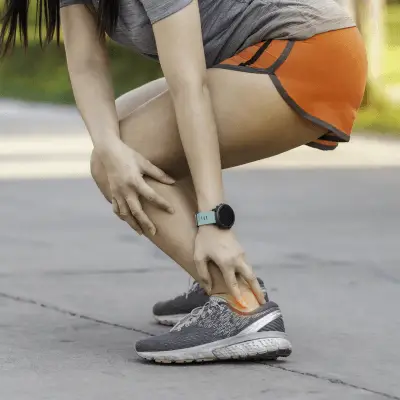
Named for the Achilles tendon at the back of your ankle, this common running injury develops gradually. It’s caused by tiny tears in the tendon and exacerbated by chronic inflammation.
The back of your ankle may feel stiff and sore when you first get up in the morning, or when you begin your run. This pain fades as your body warms up, only to return after your run. You’ll notice the stiffness when you walk uphill, as this stretches your Achilles tendon even more.
The main cause of Achilles Tendonitis is overuse, or ramping up your training too quickly.
Wearing the wrong shoes will make things worse. High heels cause your Achilles tendon to shorten over time, making you more prone to injury when you run — especially if you run uphill.
The main treatment for Achilles tendonitis is rest.
Apply an ice pack to reduce inflammation and take it slow for a few days.
Recovery time depends on the severity of the injury. Most people will need to rest for two to three days before running again.
When you begin to run again, increase your distance gradually.
Avoid running uphill until your ankle is completely healed.
3) Runner’s Knee
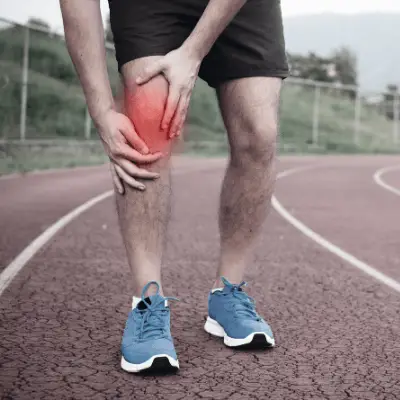
This common running injury is characterized by persistent aching pain behind and around your kneecap. You may notice swelling or a grinding sensation.
Runner’s knee can be caused by overuse or by a direct injury to the knee. The most common treatment is to practice RICE:
- Rest
- Ice
- Compression
- Elevation
Recovery time depends on the severity of the injury. You may want to get the all-clear from your doctor before running again. Swimming is a great option in the meantime, as it allows you to stay active with minimal stress to your knees.
4) Iliotibial Band Syndrome (IT Band Syndrome)
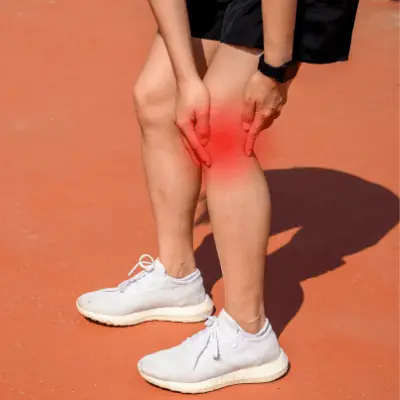
This common running injury is sometimes confused with the runner’s knee. The distinct difference between IT Band Syndrome and runner’s knee is where the pain is located. The location of the pain for IT Band Syndrome is on the lateral (outside) of the knee and extends up the lateral part of the thigh sometimes all the way up to the hip. The location of the pain for the runner’s knee tends to be behind and around the knee cap area.
Reasons you develop IT Band Syndrome:
- Poor Training Habits
- Poor running form ( titled pelvis when running, heel striking)
- Actual differences in the leg length of your bones (rare)
- Running on the same side of the road (leg-length discrepancy) because the center of the road is higher and declines to one side causing a tilted pelvis and more pressure on one side of the body (medicinenet)
Just like runner’s nice a common treatment for IT Band Syndrome is to practice RICE:
- Rest
- Ice
- Compression
- Elevation
Check out this post on when to apply heat or ice therapy for long-distance running injuries.
Recovery time depends on the severity of the injury. You may want to get the all-clear from your doctor before running again. Swimming is a great option in the meantime, as it allows you to stay active with minimal stress to your knees.
Also, avoid running hills while recovering from IT Band Syndrome. When you run downhill, the IT Band helps to stabilize your knees putting extra stress on your IT Band.
5) Leg Cramps
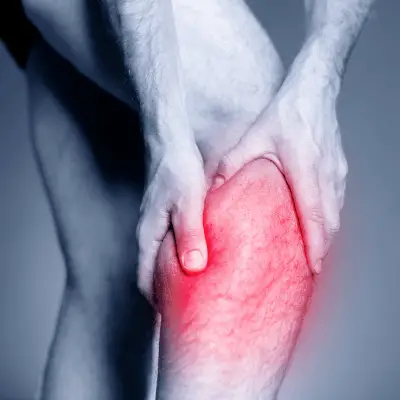
As with side cramps, dehydration and electrolyte loss are a common cause of leg cramps.
The best treatment is to massage your calf muscles as soon as they begin to cramp. Drink some water. As the cramp begins to ease, stretch your leg and resume walking or running at a moderate pace.
Leg cramps are also a sign of muscle fatigue. Consider resting for one to two days and waiting a while before increasing the length of your runs.
6) Shin Splints

Whereas leg cramps are felt in your calf muscles, shin splints are characterized by pain on the inside border of your shin bone.
Related: Do compression socks reduce shin splints?
Shin splints happen when you do too much too fast and fail to give your body enough time to heal between sessions. Poor running techniques (such as overstriding or landing too hard on your feet) will increase stress on your body.
For a more detailed post about running form including variations due to terrain changes (including breathing patterns) check out:
Proper Running Form on flats, hills, ice/snow, sand, and trails
The most important thing to do is rest and recover.
Recovery time will depend on the extent of your injury. If you get off of your feet at the first sign of shin splints and take it slow when you begin training again, recovery may only take a day or two. If you push it until you’re in serious pain, recovery can take weeks or even months.
7) Plantar Fasciitis
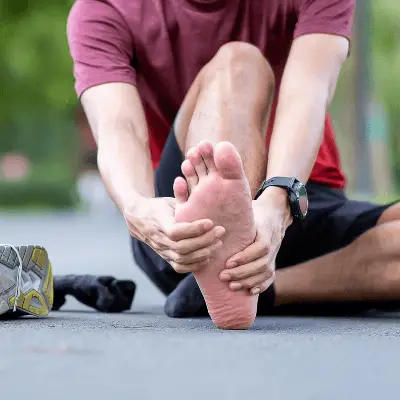
The connective tissue at the bottom of your feet is called your plantar fascia. When this tissue is ripped or torn by a sudden increase in mileage or inadequate shoes, the resulting condition is called plantar fasciitis.
Symptoms include stabbing pain in your heel or a deep ache along the arch of your foot. Any pain in the bottom of your foot is indicative of plantar fasciitis.
Stretching your calf muscles will decrease the stress on your plantar fascia, as will taking your training slow and steady. Running on soft surfaces and wearing proper shoes will also help.
Severe plantar fasciitis may take several weeks to heal. Icing, stretching, and massaging your feet can decrease recovery time.
8) Stress Fractures

The term stress fracture describes a small crack in a weight-bearing bone. This usually happens in one of the leg bones, but can occur in the pelvis as well.
Stress fractures are felt as a localized pain deep in a bone that gets progressively worse. The muscles around it may become tight and sore, and it will hurt to press on the area.
Hitting the ground too hard is the main cause of stress fractures. Look into adjusting your stride frequency (steps per minute) or running on your toes rather than striking your heels against the ground.
Recovering from stress fractures usually requires at least six weeks of rest. This is a serious injury that may require a boot or crutches; treatment options are best discussed with a professional.
Prevent Common Running Injuries
Treatment is all well and good, but how can you avoid getting injured in the first place?
Running Form
Most new runners that get injured don’t take a few minutes to figure out what proper running form is. Proper running form can prevent many injuries from ever occurring including, plantar fasciitis, Runner’s Knee, IT Band Syndrome, and LPCH (hip) issues. For a more detailed post about running form including variations due to terrain changes (including breathing patterns) check out:
Proper Running Form on flats, hills, ice/snow, sand, and trails
Take it Slow
Start slow and focus on form. Run with good posture and be mindful of your feet. Land softly to decrease stress on your body.
Don’t jump from one mile a day to ten. Increase your mileage slowly — experts recommend no more than 10% each week.
And don’t forget to stretch!
Discover how 80/20 running is the way to stay injury-free.
Strength Train
Strong muscles and tendons are a shield against potential injury.
Invest in Comfortable Shoes
The best shoes aren’t necessarily the most expensive ones; they’re the ones that fit your feet and running style.
Test drive shoes before you buy them, and replace worn-out shoes that hurt your feet.
When is it time to retire running shoes? (click here to find out)
Barefoot-style shoes protect your feet without restricting their movement. Just make sure to ease into them and adjust your running style; if you keep slamming your heels down in these, you’re asking for an injury.
Rotating between multiple pairs of shoes and running on a variety of surfaces can also reduce your risk of injury.
For a complete detailed post about how to start running barefoot check out:
How to remain injury-free while barefoot running
Listen to Your Body
Many runners make the mistake of pushing themselves too hard, too quickly. They push past the pain, pop a pill, and keep going. This can lead to more severe injuries.
Give your body time to recover before the pain gets worse.
Rest
Alternating between running and other forms of exercise is a great way to stay active without straining any particular bone or muscle group.
Rest between runs and get plenty of sleep.
You won’t lose your hard-won progress if you take a day or two to rest, and it may save you weeks of recovering from an injury.
Final Thoughts
Don’t let a fear of injury keep you from running! Be smart and take it slow. Increase your mileage slowly, stay hydrated and nourished, and give yourself time to rest.
References
https://www.verywellhealth.com/what-is-rice-190446
https://pubmed.ncbi.nlm.nih.gov/14526862/
https://blog.ochsner.org/articles/running-medicine-training-injury-prevention
| Help support me and subscribe to my YouTube channel. YouTube video - 30 ways to make your runs less painful! Coach Scott's Credentials:
|
To sign up for a FREE half marathon training schedule, log sheet, and pace predictor CLICK HERE.

Recommended gear for runners
Connect with me:
| facebook.com/BeginnerToFinisher/ |
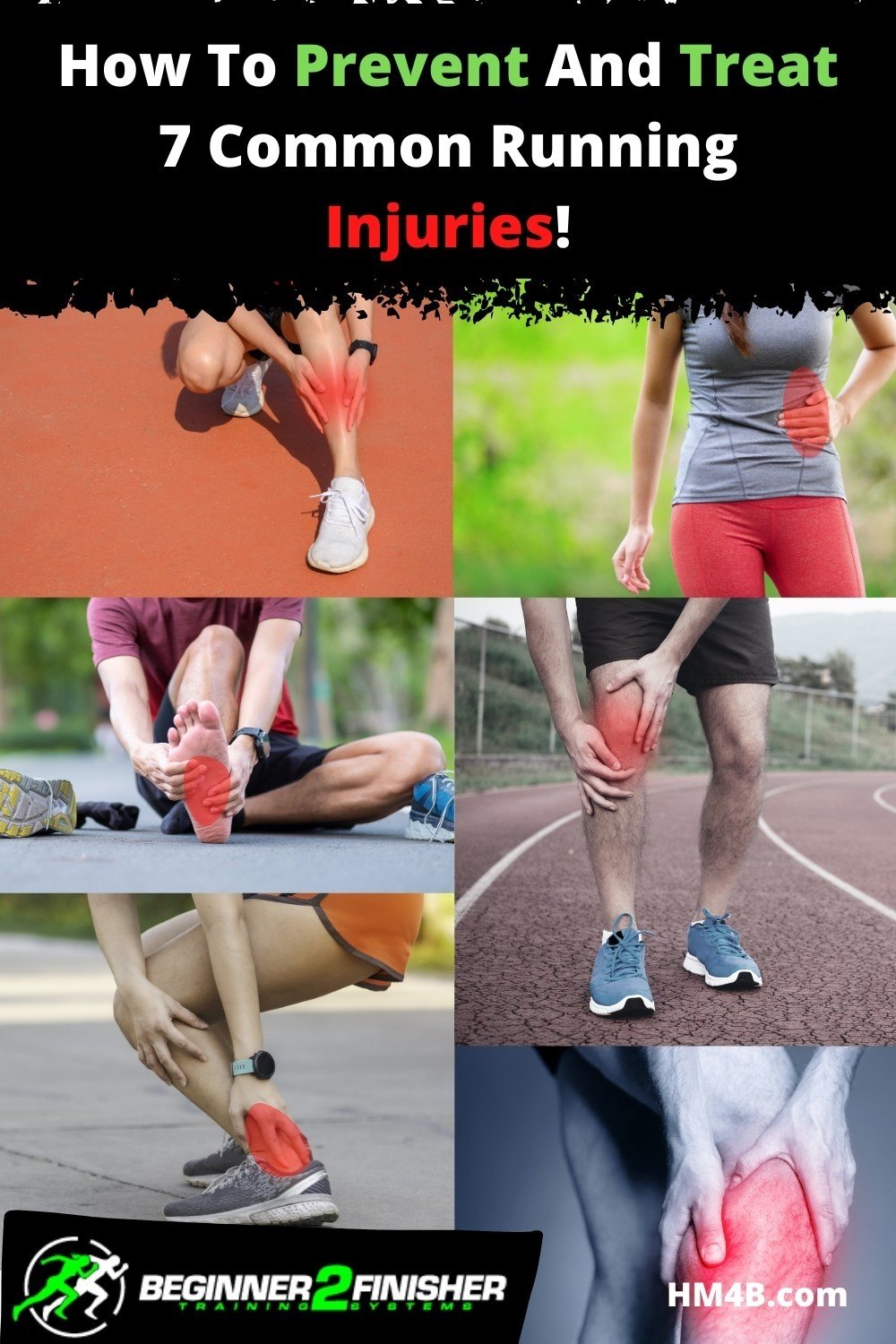
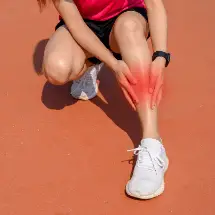
30 thoughts on “How To Prevent And Treat 8 Common Running Injuries!”